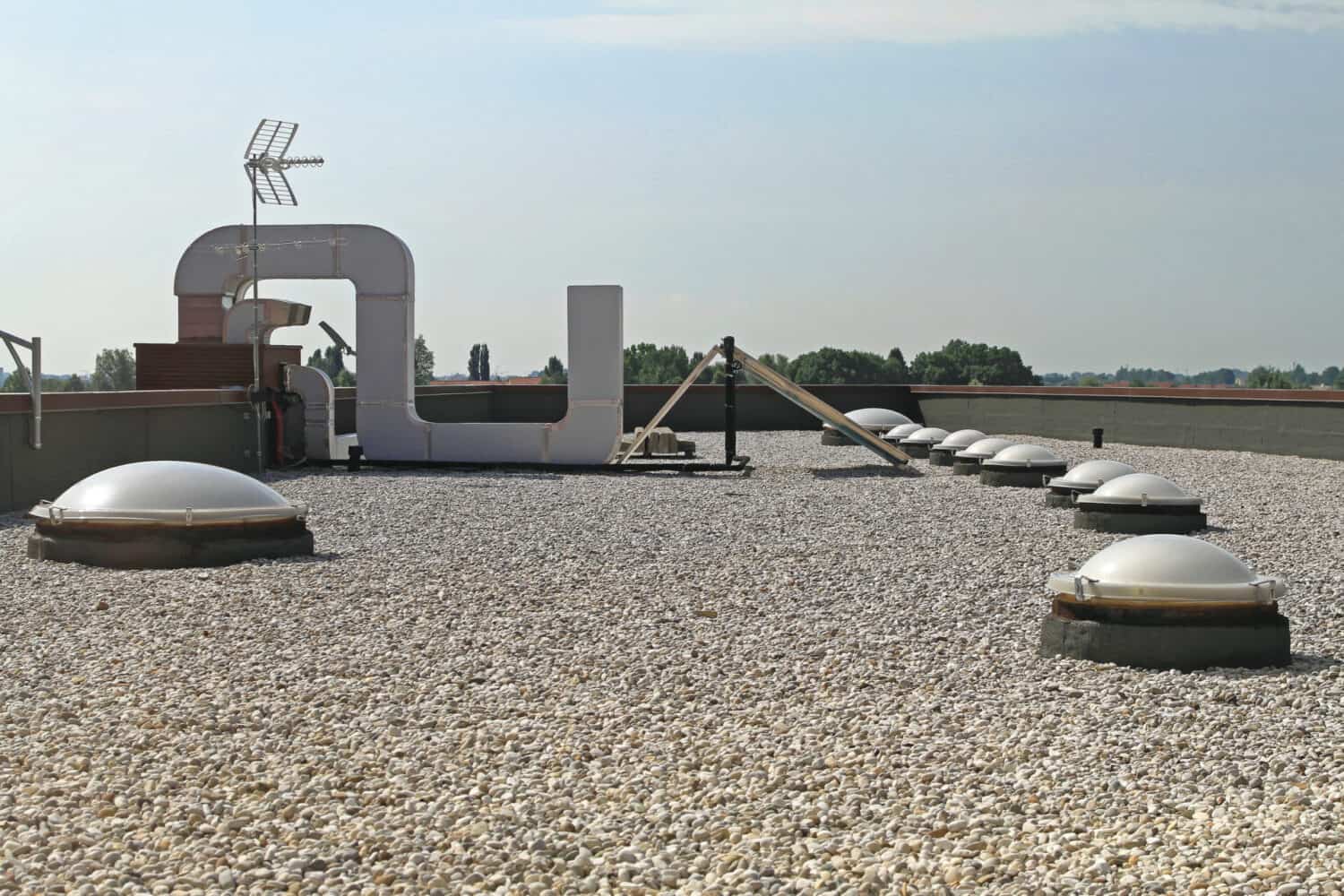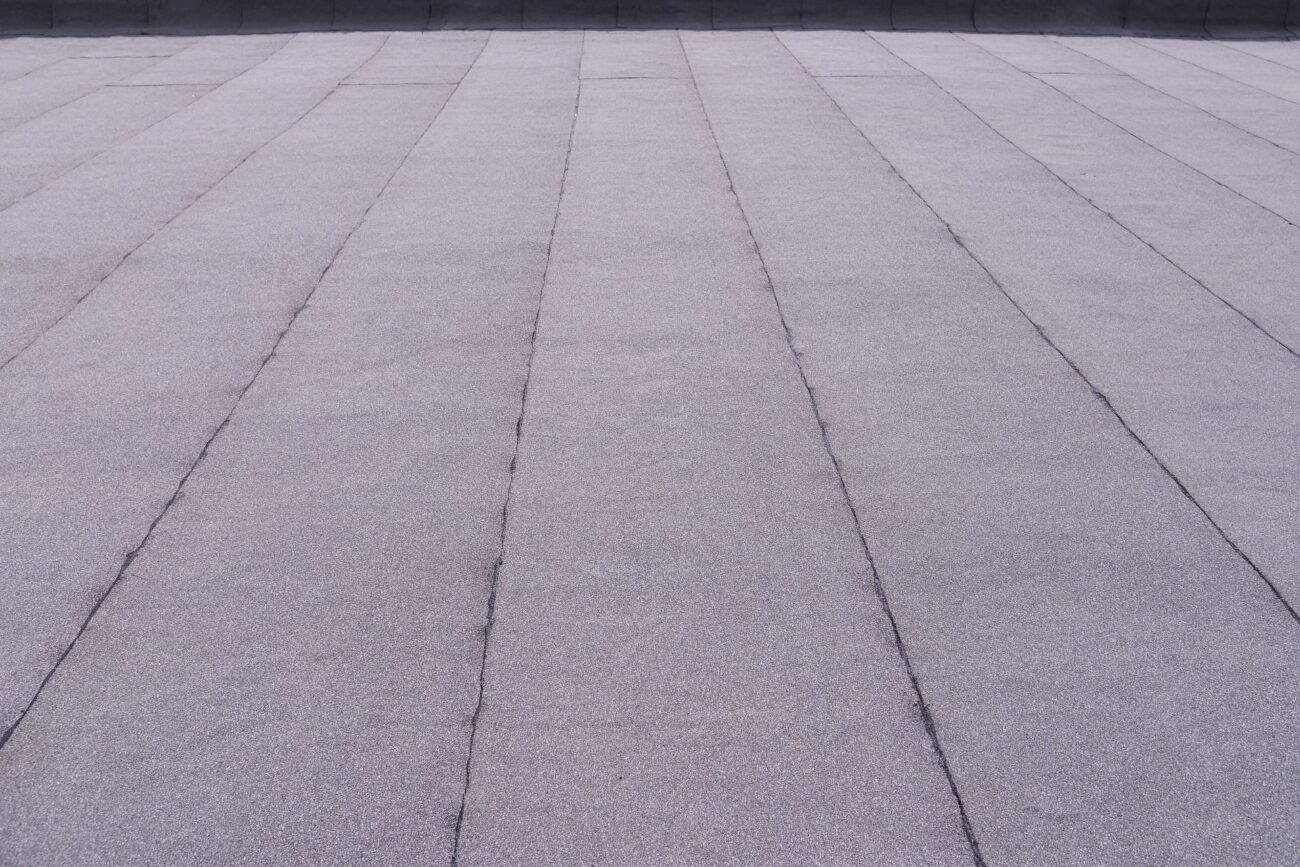A low slope roof is just one of the many types of roofs you can choose for your home. While different from other styles of roofs, more and more people are considering using a low slope roof for their home or commercial building. Before deciding whether you want to use a low slope roof on your home or building, you need to consider a few key points. These include understanding the difference between a low slope roof from other types of roofs, the materials recommended for its use, the process of how to build a low slope roof, and what can cause damage to a low slope roof.
In this article, we’ll explore the difference between a low slope roof and a flat roof, what types of materials you should use for a low slope roof, how to properly install one with the help of experts, and what could likely cause premature low slope roof decay. With this knowledge, you should have all the information you need to decide whether a low slope roof will work for your home or business.
What is a Low Slope Roof?
A low slope roof, often known as a shallow slope roof, pitches between 1:12 and 4:12. Higher pitched roofs make for an architectural style that is common to homes with a medieval or gothic look and feel, but the lower pitched roofs have the advantage of reduced maintenance costs and versatility. This sleek, thin look can appeal to all kinds of homes. Therefore, homeowners seeking a minimalist aesthetic may find the design advantages of a low roof particularly appealing.
Low Slope vs. Flat Roof
Low slope vs flat roof are sometimes thought to be the same thing, but there is a difference between the two. Pitched at a rate of 0:12 (i.e., no slope at all) is a flat roof. As explained above, a low slope roof is usually pitched between 1:12 and 4:12. The difference is significant when considering water runoff as you might use different materials for the two types of roofs.
Best Roofing Materials for Low Slope Roofs
Choosing the right type of roofing is crucial for the success of a low slope roof. Low slope structures may require different types of materials that function to keep the roof durable, tight, and looking good. Understanding the full range of low slope roof options is essential for individual homeowners and homes, commercial properties, architects, and contractors who seek roofing solutions to reflect their individualized tastes, financial plan or environmental concerns.
If a homeowner plans to replace a roofing system for a residential low slope roof, they should ensure that the materials chosen pay special attention to the longevity of the roof’s durability, weather resistance, and the home’s curb appeal. The various roofing materials for low slope roofs include:
- Single-Ply Membrane Roofing: Single-ply membrane is the most popular choice for a low slope roof. It is easily installable on even the oddest of slopes, and has a reputation to handle extreme weather. Examples of single-ply membrane roofing include TPO (thermoplastic olefin), PVC (polyvinyl chloride) and EPDM (ethylene propylene diene monomer). All of these materials are strong enough to sustain UV rays, chemicals, and weather conditions.
- Modified Bitumen Roofing: Another low slope roof option is modified bitumen roofing. Some of these membranes are formulated with a blend of asphalt and rubber modifiers, blending reliability with the modern elasticity of roofing materials.
- Built-Up Roofing: Built-up roofing, or BUR, is a multi-step process involving reinforced layers of asphalt saturated felt or other barrier material, topped off with a final coat of bitumen overlaid and gravel or reflective surface. Waterproofed and extremely robust, BUR is one of the more classic roofing methods as it can endure both wind and rain.
- Metal Roofing: A metal roof, such as standing seam or metal shingles, have the best fire and weather resistance and are very low maintenance. The one downside is that the initial cost is much higher than traditional roofing materials. However, metal roofing can last over 50 years, whereas asphalt only lasts for about 20 years. Additionally, metal roofing is a great value for homes without chimneys. For semi-commercial or commercial buildings that need the best fire and weather resistance but don’t require tall peaks and/or as much curb appeal, metal roofing is really the only option.
- Green Roofing: Sustainability and energy-saving starts with a green roof. The green roof is a newly invented feature that puts a layer of vegetation inside a building. In order to do this, green roofs require specialized engineering to function, but do offer many benefits in terms of insulation and design.
Installation for Low Slope Roofs
Installation is critical for optimum low slope roof performance and durability. Although gravity assists steep-slope roof systems in moving rain water off the roof, low slope roofs must be designed and installed in order to address the retention, runoff, and movement of water to avoid water-trapping and leaks, as well as the other problems associated with pooling water.
The various installation methods for low slope roofs include:
- Adequate Slope Design: Understanding the optimal low slope roof pitch is crucial during the building planning phase, as it directly influences water drainage efficiency and ensures the structural integrity of both residential and commercial buildings.
One of the main tasks of roof installation with low slope is designing an adequate slope that gives any rain water the ability to flow off of the roof. A designed slope will prevent water from pooling on the roof, which will lower the chance of leaks and water damage taking place.
- Use of Underlayment: It is important to install an appropriate underlayment on low slope roofs. The underlayment serves as an additional protection which prevents water infiltration and provides additional insulation. On low slope roof installations, there are two types of materials that work well as the underlayment: a self-adhering modified bitumen membrane or synthetic underlayment materials.
- Flashing and Sealants: The most commonly vulnerable points for water intrusion are intersections (where a roof plane meets a roof plane or a roof plane meets a wall), vents, and seams. Proper flashing (using high-quality flashing materials and compatible sealants) is required at these points to make them watertight.
- Professional Installation: Because installing a low slope roof requires more attention to detail than a regular pitched roof, it is advisable to hire experienced roofing professionals whenever possible. Certified contractors know the specific requirements of low slope roof installs and can ensure that the roof will conform to industry standards and local building codes.
Maintenance and Longevity of Low Slope Roofs
Through proper maintenance, you could extend the life of any roofing system while also preventing problems, such as ponding water, leaks, and premature failure of the membrane on low slope roofs.
Be sure to follow these routine maintenance steps:
- Regular Inspections: Twice a year, you should schedule roof inspections. The inspection should check out any seams or flashings present in the roofs, as well as the specific roofing material used.
- Clearing Debris: The extra debris accumulated on the flat roof will prevent the roof from draining water effectively at a later time. Therefore, regular leaf, branch, and other debris removal are recommended.
- Prompt Repairs: Dealing with repairs promptly is vital, since managing minor problems before they develop into something major will prolong the life of the roof. It will also prevent expensive damage later on. For example, deal with a small leak, some damaged flashing, or a loose section of membrane immediately before the problem develops.
- Snow Removal: If your region is prone to snowfall, this snow on the roof needs to be removed to prevent overloading and causing damage to the structure. Ice and snow removal experts are best called on to complete the job so you can avoid adding more damage to your house.
Choosing the Right Low Slope Roofing
When choosing the best low slope roof, one of the important factors to consider is the climate in which you live. Additional factors to consider in choosing the best low slope roof include your budget, whether you like a modern or traditional look/design, and your long-term maintenance plans.
Exploring a variety of low slope roofing solutions is crucial during the decision-making process, allowing property owners to tailor their choice to the specific needs of their residential or commercial structures.
- Climate Considerations: The local climate is an important factor when choosing the right low slope roof. Certain materials may be suitable for a region that has extreme temperature variation, heavy rainfall, or a lot of sun.
- Budgetary Constraints: Cost is a reality associated with any construction project. Understanding the initial cost of the project is not the only factor to be kept in mind, but also the implication of maintenance fees over the long-term management of the property.
- Aesthetic Appeal: It is important to take care of functionality, but it is also important to keep an aesthetic eye. The material you use for the roof has to look correct with the design of the building.
- Long-Term Maintenance Plans: Maintenance plays a major role in planning a rooftop, as different materials need different resources for upkeep. Therefore, it’s worth evaluating whether resources are available in your area for ongoing maintenance. For example, when considering roofing options for a commercial low slope roof, it’s essential to prioritize durability and water resistance to ensure a long-lasting and reliable solution for the commercial property.
For example, when considering roofing options for a commercial low slope roof, it’s essential to prioritize durability and water resistance to ensure a long-lasting and reliable solution for the commercial property.
Conclusion
Low slope roofs are a great option for both residential and commercial buildings. However, it goes without saying that choosing the right type of roofing for your building depends on a number of factors. From budgets to climate to the availability of roofing materials in your area, your final decision is whether your roofing system will perform over the long term. From deciding on a single-ply membrane roof, a modified bitumen roof, a metal roof, or even a green roof, there are plenty of options to choose from for a low slope roof.
Keep in mind that installing all types of low slope roofs requires professional expertise and skill. These experts may have different opinions on the characteristics, advantages, and disadvantages of different types of roofing, so always have a few discussions before making your decision. For homeowners, personal preferences may depend on the installation cost, maintenance costs, the longevity of the roof, and the yearly maintenance costs. For instance, some people prefer wood shingles and prefer investing a little more every year to maintain its beauty, while others prefer PVC or TPO roofing because these materials are easy to manage, cheaper, or made with recyclable materials. The climate, region of your home, and architectural design also influence your choice of roofing.
If you’re considering a low slope roof for your residential or commercial property, talk to the experts at Summit Construction Group. We’d be happy to discuss our services and give you a no obligation quote.


